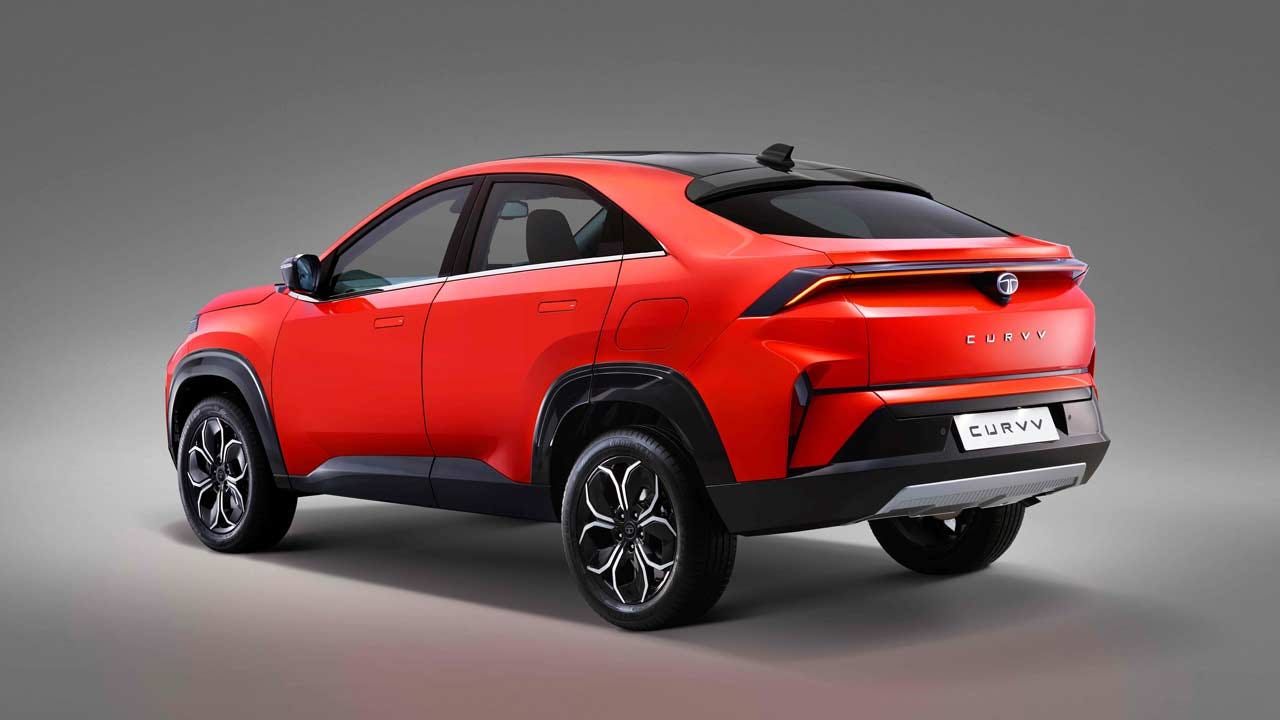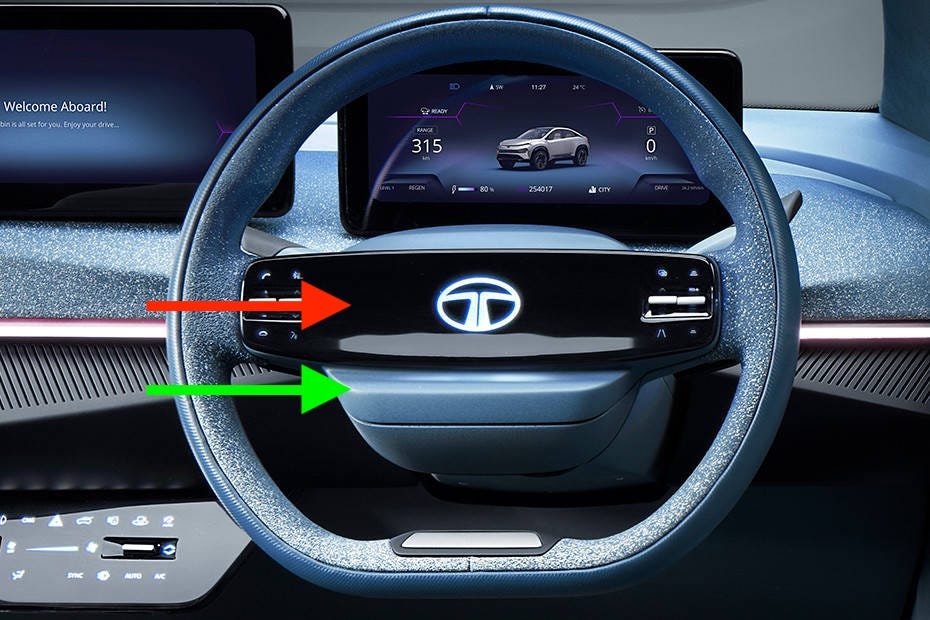Tata Curvv EV: Too Many Flaws Ruin a Great Foundation
I test-drove the Curvv EV1 crossover2, both in the city and on the highway, and my conclusion is that I wouldn’t buy it. The car has too many flaws to recommend.
Many of the cars I don’t recommend have fundamental flaws, like a short range, prioritising performance over comfort to an extreme, being too cramped or, in the case of SUVs3, not being good at what most people want. The Curvv EV is different. The core of it, the car part of the car, is excellent. But they ruin it with a lot of poor decisions layered on top, from being cramped to out of sight controls to unreliable CarPlay to an artificially generated whining noise…
Imagine you take a beautiful terminal like T2:
Then you close one of the bathrooms. Make one of the handrails wobbly. Turn off one of the travelators. Move gate 1 next to gate 40 rather than next to gate 2. Flip one of the signs to point in the opposite direction. Add a puddle of water. Many of these flaws individually may not be a dealbreaker, but when you add them up, you’ll be ruining the terminal.
The Curvv EV is like that. They got the fundamental part of the car right, but you die a death of a thousand cuts.
Here are the strengths (+) and weaknesses (-) of this car:
- The Curvv EV doesn’t look as good as the Windsor.
- The outside door handles are flush with the body, which adds another step to opening the door. It’s a triumph of form over functionality.
- The fit and finish is of a poor quality, like an 8-year-old car.
+ The glovebox is big and has two levels.
- When I turned it on, there was a loud and crude beep. I suppose that informs me that I’m in a mediocre car.
+ Electronic parking brake and auto hold.
- The gear lever is spring-loaded and returns to its original position when you let go. So you can’t look at it to tell which gear you’ve selected (like N, P, D and R). Same with the eco / normal / sport selector wheel.
- The boot is deep but has limited height, because the roof slopes down:
An SUV-like high boot would have been bigger and better.
+ The tailgate is electric.
+ Hill descent
- The under-arm storage is small.
+ The door pocket is small.
+ The reverse camera has curved indicators that move as you rotate the steering wheel. These tell you the path the car will take. But these indicators are not available in front.
- As I was reversing, I got a loud false alarm and red boxes showing the obstacles, which turned out to be the pavement. I’ve never seen any reverse parking system confuse the ground for obstacles. The salesman had a lackadaisical attitude about this, as he did about all the other flaws.
+ There are no front sensors, so you don’t get a beep or green / orange / red horizontal lines showing how far you are.
- The steering wheel has two areas where you can press to honk:
The red part is harder to press than the green. Though both are hard. I can’t honk with one finger.
Comfort
- The legroom was insufficient for me to stretch my legs comfortably.
+ The steering wheel did not touch my knee.
- The headroom is poor. To not feel claustrophobic, I had to lower the seat all the way down, which presses my stomach and makes me feel uncomfortable. In this car, I have to suffer, but I choose where.
+ The seat is electrically adjustable, 6-way.
- Thigh support is not adjustable.
- The steering wheel tilts but doesn’t telescope.
- The suspension is not as soft as the Creta’s, to say nothing of the stellar Windsor. Maybe it’s because of the big 18-inch wheels? Bigger wheels are usually less comfortable.
Driving
- I started driving the car at low speeds like 30 kph to get familiar with it. It has an annoying whine, which is apparently a sound played from a speaker to warn pedestrians. This can’t be turned off, according to the salesman. At low speeds, the Cuvv EV didn’t feel any better than a petrol car. Unlike the M.G. Windsor, which is hugely better than a petrol car at any speed.
- When I was about to hit the car in front me at 5 kph, I slammed on the brake, but it didn’t stop immediately. Instead, the front dove forward and down.
+ Acceleration is fast and smooth, unlike petrol cars that are fast and uncomfortable. Or slow and comfortable, but even then not as much as an EV.
+ The car defaults to regen, but when I turn it off, it coasts beautifully.
+ After accelerating quickly to 40 kph, I took my foot off the accelerator, and it eased off so smoothly. In other words, the acceleration gently ended, and it smoothly transitioned to coasting. I didn’t experience this transition done so well in any other car. If you were to plot the acceleration against time, it would look like
rather than like
or
- Once I reached a high speed, I realised that the Curvv is very smooth and a next generation vehicle. I wouldn’t want to go back to petrol.
+ 120 kph feels like 70. Effortless to drive.
+ When I floored it from a standstill, it rocketed forward, taking 10 seconds to reach 100 kph
+ I was able to change lanes abruptly at 105, which I can’t in a petrol, since the latter are not as stable.
+ The Curvv is easy and tireless to drive, compared to any petrol vehicle.
+ The immense acceleration of the Curvv let me jump through gaps in the traffic in ways I can’t with a petrol.
On the whole, the driving experience is much better than any petrol car.
Range
The range is just 183 km at high speed, in Sport, with regen off.
Tata claims that the car charges from 10-80% in 40 min if you’re using a charger that can supply 70 kw. The car uses a CCS2 port, and you can open the lid both from inside the car and outside.
Digital features
+ Both USB-C and -A
+ 45W power via USB-C, enough to charge a laptop
+ The infotainment screen has low height, which is bad for navigation: it shows what’s far from your path, which is irrelevant. A taller and narrower screen works better, since you can see what’s coming down the road.
+ The infotainment system doesn’t block the view of the road, as it does in some cars.
- There’s no place to put the phone when charging wired. This is the first car out of two dozen I drove that has this problem. I didn’t even realise that this was something that could be screwed up. I had to use wireless charging, and the phone didn’t charge as fast as with wired, as expected. I left the car with only 78% charge.
- Wireless CarPlay didn’t work, till the salesman factory-reset the infotainment system.
- The car comes with JBL speakers, which weren’t as good as the stellar Bose 8-speaker sound system in the Creta.
- Tata hijacked the voice button on the steering wheel to open their voice assistant, rather than Siri. So, when I asked it to play a band, it didn’t.
Safety
+ Both turn indicators trigger a blind spot camera.
+ You get a yellow icon in both wing mirrors to warn of traffic in your blind spot.
- When I stopped well behind the car in front, I got a collision warning icon and the car flashed its hazard lights to inform the vehicle before me that a collision has supposedly happened.
- The lane departure system warning is subtle and easy to miss if you’re half-asleep.
Front passenger seat
- The seat is low and my stomach is pressed, making it uncomfortable.
± No electric adjustment
+ The seat is height adjustable, but a plastic piece bumps your hand each time you operate the lever.
- The legroom is insufficient even when the seat is low and back: I couldn’t stretch my legs comfortably.
- The headroom is poor even when the seat is low; my view is interrupted by the windshield header.
Rear seat
- The legroom is terrible, the worst among two dozens cars I’ve test-driven. Even when I sit with my legs crossed, my toes touch the front seat.
- The headroom is poor.
+ USB-C port with 45W power, enough to charge a laptop.
+ Good thigh support
- The window isn’t panoramic
- The sunroof doesn’t extend above my head, so it doesn’t feel very spacious.
Cooling
+ Climate control
+ It has a panoramic sunroof, but it’s not as panoramic as the Windsor or the Creta. The sunroof control is finicky, and opens completely when I want only the opaque part to open. This is a common problem.
+ The AC fan has 7 levels.
- The AC buttons are capacitive. They don’t have tactile feedback. When I tried to adjust the temperature, my hand brushed against another button and turned off the AC accidentally. I wasn’t even aware this happened till the salesman pointed it out. Oversensitive buttons without tactile feedback are unsafe to use while driving. And, unlike using WhatsApp, you actually need to adjust the AC while driving.
- The windows have one touch down but you have to hold them down for 2 seconds, which is inconvenient.
- No rear sunshades
+ Ventilated seats.
+ The seat ventilation is strong, and immediately evaporates sweat. This is better than most cars where it’s subtle and takes time to work. In fact, I even asked a salesman of a different brand if it’s working. After an hour, I realised my back was comfortable rather than warm, and that the seat was indeed being ventilated. The Curvv’s ventilation is much better, and the one I would prefer. It will make me feel comfortable when I come into the car on a hot summer afternoon.
+ You can turn the AC on remotely via the app4.
- The seat ventilation button is beside the seat. I had to lean over while driving to see whether it’s on and if so what level it’s at. The LEDs are dim, so I had to cup my hand over them, and even then I couldn’t see them. This is unsafe. And dumb — did the people building this system turn off their brains along with the ventilation? Did they not use it themselves? The Curvv has so many flaws. Some are safety problems. Others are annoyances. Some are bugs like wireless CarPlay not working till the infotainment system was reset. Some are defective by design. As MotorInc says, these arise from Tata higher-ups denying, deflecting and explaining things away.
Don’t buy Tata if you want a well-designed, polished product.
The Curvv comes in 45 and 55 kwh battery versions. This review is about the former. I wouldn’t recommend the former. And that goes for any EV.
It’s monocoque / unibody.
Which means ladder frame construction and not front-wheel drive. Most cars marketed as SUVs are actually crossovers.
For a subscription of ₹4K a year.









